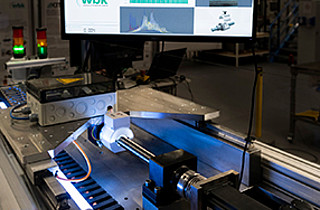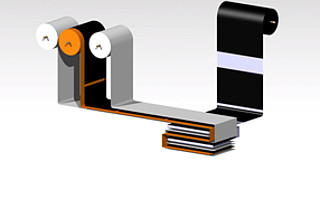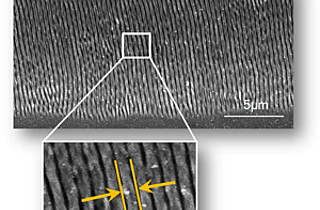Format-flexible and continuous cell stack assembly
Lithium-ion batteries become more and more powerful thanks to continuous development successes. This is constantly opening up new areas of application, for which application-specific cell formats are required. The increasing demand for individual formats is currently offset by rigidly interlinked production lines.
State of the art
A central process step in battery cell production is stack assembly: the alternating fitting together of electrodes (anode, cathode) and separator to form a stack. Stack assembly is achieved by stacking the materials from magazines layer by layer. The automation technologies used here, usually involving robots and grippers, limit throughput due to the high number of pick-and-place operations. In order to produce large quantities cost-effectively, stacking machines are often designed for a single cell format. A format change requires the conversion of mechanical components and the reprogramming of the machine.
Technology
Researchers at the wbk Institute of Production Science are responding to the desire for more flexibility with a new system concept for cell stacking. The redesigned EXINOS production system consists of four machine parts with the core functions of cathode and anode singulation, separator handling and folding. In combination with movable axes, cutting tools, vacuum rollers and sensors, the system is able to process the material from the coil precisely and without damage. Electrode and separator sheets of variable lengths (from 100 millimetres) are automatically cut and stacked. The width can be varied via the coil width. The electrode sheets are fixed to the separator with adhesive dots during the process. The stacking position of the individual sheets is flexible so that cells can be produced in many different dimensions (length/width/height).
Advantages
The EXINOS plant concept allows the cell format to be changed quickly and easily without changing tools. It overcomes the fixed bond to a specific tool and integrates several process steps at the same time. The processing of the materials from the roll and the integrated process management enable a continuous and therefore highly productive stacking process.
Options for companies
A prototype demonstration plant has been set up at the institute. The concept is designed for maximum flexibility and individualization. The individual core functions can also accelerate the production of one cell format. KIT is looking for partners for application-specific development projects and the use of the process.
Your contact person for this offer

Innovation Manager Energy Karlsruhe Institute of Technology (KIT)
Innovation and Relations Management (IRM) Phone: +49 721 608-25335
Email: pelisson-schecker@kit.edu




